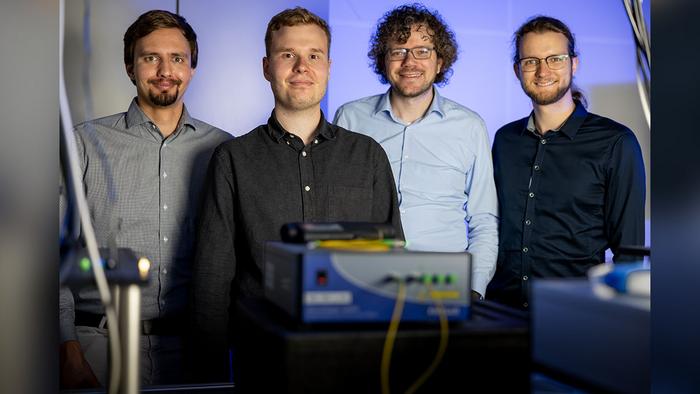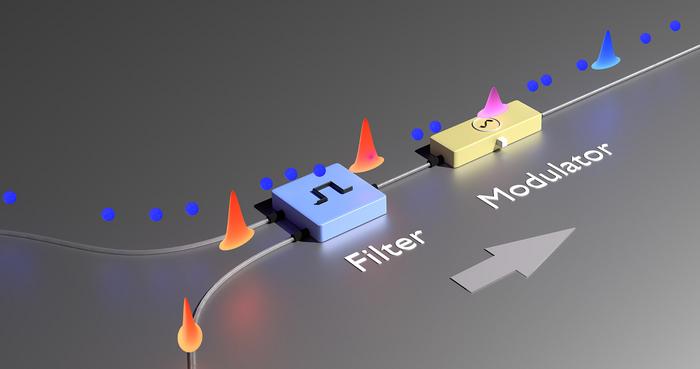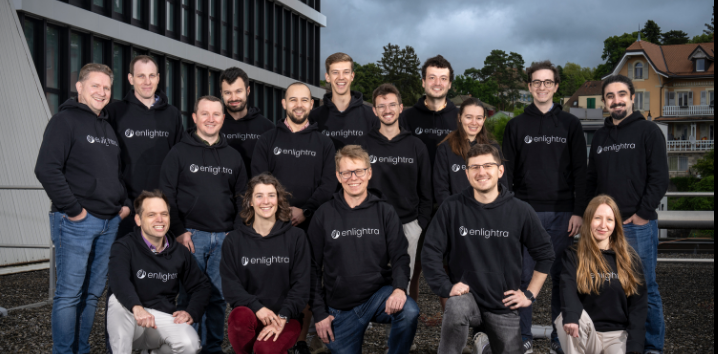Insider Brief
- Researchers at the Institute of Photonics have developed a transmitter-receiver concept that enables the transmission of entangled photons over optical fibers, a key step toward building a quantum Internet.
- The team successfully maintained photon entanglement when combined with a laser pulse, allowing simultaneous transmission of conventional and quantum data through the same color channel, overcoming previous limitations.
- This could pave the way for hybrid networks, where optical fibers can support both conventional and quantum Internet, ensuring that all color channels remain available for traditional data transmission.
- Image: In their experiment, the researchers can change the color of a laser pulse with a high-speed electrical signal so that it matches the color of the entangled photon. This effect enables the researchers to launch laser pulses and entangled photons of the same color into an optical fiber, and to separate them after transmission. (Institute of Photonics)
PRESS RELEASE — Four researchers from the Institute of Photonics at Leibniz University Hannover have developed a new transmitter-receiver concept for transmitting entangled photons over an optical fiber. This breakthrough could enable the next generation of telecommunications technology, the quantum Internet, to be routed via optical fibers. The quantum Internet promises eavesdropping-proof encryption methods that even future quantum computers cannot decrypt, ensuring the security of critical infrastructure.
“To make the quantum Internet a reality, we need to transmit entangled photons via fiber optic networks,” says Prof. Dr. Michael Kues, Head of the Institute of Photonics and Board Member of the PhoenixD Cluster of Excellence at Leibniz University Hannover. “We also want to continue using optical fibers for conventional data transmission. Our research is an important step to combine the conventional Internet with the quantum Internet.”
In their experiment, the researchers demonstrated that the entanglement of photons is maintained even when they are sent together with a laser pulse.


“We can change the color of a laser pulse with a high-speed electrical signal so that it matches the color of the entangled photons,” explains Philip Rübeling, a doctoral student at the Institute of Photonics researching the quantum Internet. “This effect enables us to combine laser pulses and entangled photons of the same color in an optical fiber and separate them again.”
This effect could integrate the conventional Internet with the quantum Internet. Until now, it has not been possible to use both transmission methods per color in an optical fiber.
“The entangled photons block a data channel in the optical fiber, preventing its use for conventional data transmission,” says Jan Heine, a doctoral student in Kues’ group.
With the concept demonstrated for the first time in the experiment, the photons can now be sent in the same color channel as the laser light. This implies that all color channels could still be used for conventional data transmission.
“Our experiment shows how the practical implementation of hybrid networks can succeed,” says Prof. Michael Kues. The research results were published in Science Advances.


















